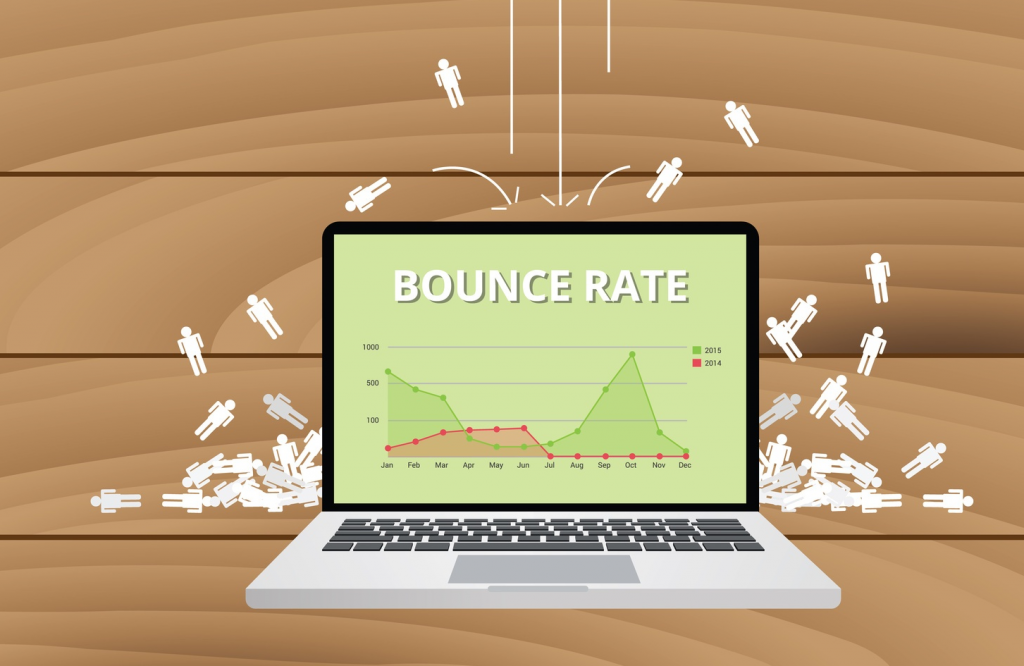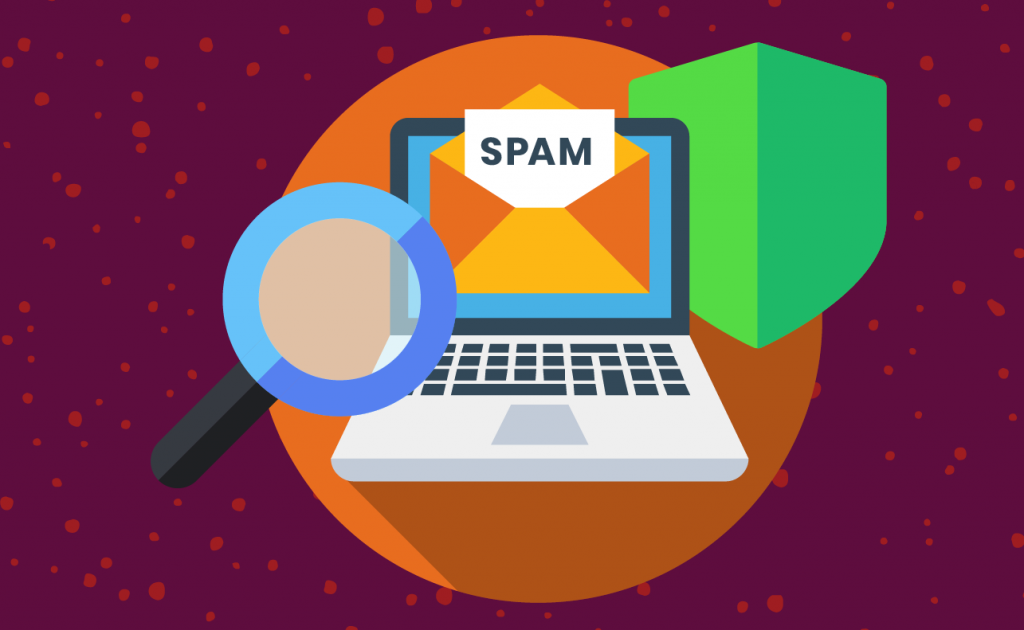Published at email by Sael

Top Email Marketing Metrics to Help Track Your Success
Published at email by Sael
Email marketing is a robust and cost-effective way for companies to connect with their customers in the digital world. But it would help if you had more than sending emails; you must know how your projects work to ensure your efforts get the desired results. This is why it's essential to keep track of email marketing metrics.
By keeping an eye on Email Marketing Metrics, you can learn a lot about how well your efforts are doing and make decisions to improve your email marketing plan based on facts.
In this blog, we'll look at the top email marketing metrics that can help you measure and track your success in the ever-changing world of email communication.
Table of Contents
1. Nine Email Marketing Metrics to help you track your success
1.1. Click through Rate
1.2. Conversion Rate
1.3. Bounce Rate
1.4. Open Rate
1.5. Unsubscribe Rate
1.6. Overall ROI
1.7. List Growth Rate
1.8. Email Sharing or Forwarding Rate
1.9. Spam Complaining Rate
2. Conclusion
1. Nine Email Marketing Metrics to help you track your success
1.1. Click Through Rate
Click Through Rate (CTR) is an Email Marketing Metrics which represents how many users clicked on the link in the email. It is an important metric as it shows if your emails are relevant and engaging to the user.

• How to calculate the CTR?
No. of clicks/ Delivered Emails * 100 = CTR.
• Example
1000 total clicks / 20,000 delivered emails * 100= 5 % CTR.
• How to improve your CTR?
a) Make sure it looks like the brand/website.
b) Create a focused layout
c) Compatibility with the majority of desktop email clients
d) Use the Proper Images with Alt Texts and Links
e) Use call-to-action buttons
f) To make buttons, use HTML
g) Provide only one call-to-action
h) Easily fit any mobile device
i) Offer ways to share on social media.
Simple email design changes may boost CTR.
1.2. Conversion Rate
When a user completes a targeted activity or objective on a website, online app, or other digital platform, it's known as a conversion in digital marketing. It is one of the important Email Marketing Metrics. This may be a specific action, like making a purchase or submitting a form, or a statistic, such as the number of repeat visits over a certain amount of time.

• How to calculate the Conversion Rate?
(Total number of users who completed the desired action / Number of total emails delivered) * 100
• Example
600 users who completed the desired action/ 12,000 total emails delivered * 100 = 5% Conversion Rate.
• How to improve the Conversion rate?
a. Use a catchy subject line to get more people to open your email.
b. Personalize the text of the email.
c. Send a message of haste or lack.
d. Include important references.
e. Use a strong call to action.
1.3. Bounce Rate
A bounce rate is the number of people who visit a website or app, look at a single page or bit of data, and then leave. The bounce rate delivers overall benefit and is most advantageous if used as an initial guide for assessing how effectively an email campaign interacts with audiences when viewed with other facts and data and within the overall picture of what a successful campaign looks like for your organization.

• How to calculate Bounce Rate?
(Total number of bounced emails /Number of emails sent) * 100.
• Example
95 bounced emails / 12,000 total emails sent * 100 = 0.79% bounce rate.
• How to reduce Bounce Rate?
a) Looking at, cleaning, and handling your email list.
b) Use double opt-in to make sure the email is accurate.
Make sure the name is accurate using SPF, DKIM, and DMARC.
c) Use an email service with a good name and track record.
d) Set up a centre for preferences
e) Use tools to make sure texts are authentic.
f) Don't use free names.
g) Check how big your emails are
h) Always keep an eye on the email stats.
Your conversion rate goes up when your email bounce rate goes down.
1.4. Open Rate
An email open rate is a way to compare how many times people open your marketing emails to how many emails you send out during a certain campaign period. When you send marketing materials and ads to customers and leads on your email lists, the email open rate is an important way to measure how well your email marketing efforts are working. It is one of the important Email Marketing Metrics.
It is essential to track the open rate because when the open rate of email marketing metrics is low, your campaign might not be successful. It also shows that your subject lines are weak.

• How to calculate this Email Marketing Metrics?
(The total number of opened emails/ the total number of emails sent) * 100 = Open Rate.
Example
(500 opened Emails/ 2000 emails sent) * 100 = 25%
How to increase the Email Marketing Metrics - Open Rate?
a) Create a Quality Email List
b) Update your Email List consistently
c) Perform Email Segmentation
d) Stay away from spam filters
e) Decide the optimal Email time
f) Write an effective subject line
g) Verify Your Sender Status
h) Use wording that catches people's attention
i) Mobile-friendly design.
So, track and increase the Email Open Rate.
1.5. Unsubscribe Rate
It's essential to know how many people leave your list. Your unsubscribe rate shows how many people have decided they no longer want to get emails from you.
Once you log in to your email service, you can access this information on your website dashboard. The Unsubscribe rate is an essential email marketing metric.
• How to calculate unsubscribe rates?
(The number of people who unsubscribed / the number of emails delivered) * 100 = Unsubscribed Rate.
• Example
(10 people who unsubscribed / 10,000 emails delivered) * 100 = 0.1 % Unsubscribed Rate.
When the Unsubscribe rate is lower, the better. A high unsubscribe rate shows strategy shortcomings that need a deeper examination of your email efforts. Perhaps the frequency of your mailings is too high, or your content and templates do not resonate with your audience.
• How to lower your email unsubscribe rate?
a) Target your audience effectively
b) Personalize your emails
c) Send Email surveys and collect feedback
d) Create responsive emails
e) Check your email frequency.
To prevent spamming your subscribers, it is essential to maintain a low unsubscribe rate.
1.6. Overall ROI
The overall return on investment (ROI) shows how much money your email efforts are making you back. If your return on investment (ROI) is good, you create greater earnings from your marketing and advertising activities than you spend on them.

• How to calculate ROI?
(Total revenue from the campaign/ the total amount spent on the campaign) * 100 = ROI.
• Example
(1, 00,000 Total revenue from the campaign / 50,000 total amount spent on the campaign) * 100 = 200% ROI.
• How to increase Email ROI?
a) Write down your goals.
b) Grow your email list on your own.
c) Make good use of timed texts.
d) Pay attention to what you can do.
e) Keep track of and test the results of how well emails work to keep increasing ROI.
1.7. List Growth Rate
The list growth rate is a key performance indicator (KPI) showing how fast your email list grows or shrinks over time. It's important because it helps you determine how reasonable your lead capture efforts are by showing why specific techniques or settings work better than others. When you have this knowledge, you can change your general plan. It is an essential Email Marketing Metric.
• How to calculate List Growth Rate?
((Number of New Subscribers – Number of Unsubscribers) / Total Contacts)) * 100 = List Growth Rate.
• Example
500 New Subscribers – 100 Unsubscribers / 10,000 Total contacts * 100 = 4% List Growth Rate.
• How to increase your email marketing metrics- list growth rate?
a) Make use of lead magnets
b) Provide members with exclusive discounts or freebies
c) Use high-quality material to attract sign-ups.
1.8. Email Sharing or Forwarding Rate
This indicator focuses on the number of users that forwarded or shared an email using the "forward" or "share this" button.
It's essential to know how often your email receivers forward or share your emails since that's how you make new contacts since your email recipients are already on your mailing list.

• How to calculate the Email sharing or Forwarding Rate?
(The number of forwards or shares / the number of delivered emails) * 100 = Forwarding Rate.
• Example
(100 forwards or shares / 1000 delivered emails) * 100 = 10% Forwarding Rate.
• How to improve Email Forwarding Rate?
a) Creating Personalized Emails
b) Include a clear CTA in your email
c) Ensure the email is easily sharable like the content should be helpful, engaging, or connected to an event the user is interested in.
1.9. Spam Complaining Rate
The percentage of recipients that flag your email as spam out of all the messages you've sent is known as the spam complaint rate. Contacts may mark emails as spam by clicking the "this is spam" or "report spam" button in their inbox, or they may choose to unsubscribe from emails by clicking the default link and specifying "spam" as their reason.
Major email companies like Gmail have decided that one spam report for every 1,000 messages is reasonable. Anything over this amount is thought to be high.

• How to calculate Spam Complaining Rate?
(Number of people marking email as spam / Number of message recipients) * 100 = Spam Complaining Rate.
• Example
(10 people marking email as spam/ 1000 message recipients) * 100 = 1%.
• How to reduce Spam Complaint Rate?
a) Don't buy, rent, or take lists of email addresses
b) Make it easy and clear to unsubscribe
c) Always use a login method that requires a double opt-in
d) Only send material that makes sense
e) Don't use spam words or methods when writing your emails and subject lines
f) When creating email campaigns, use a custom domain name
g) Keep a good routine.
2. Conclusion
In conclusion, it's important to track the right email marketing metrics if you want to know how well your efforts are doing. By keeping track of the Email Marketing metrics such as open rates, unsubscribe rates, click-through rates, conversion rates, and you can gain valuable insights into your audience's engagement and behaviour.
These Email Marketing metrics provide a clear picture of what's working and what needs improvement, allowing you to refine your strategies and enhance your overall email marketing success.
Remember that analyzing these measures in a way that is based on data will help you make intelligent choices that will help you improve your marketing efforts and reach your marketing goals.





